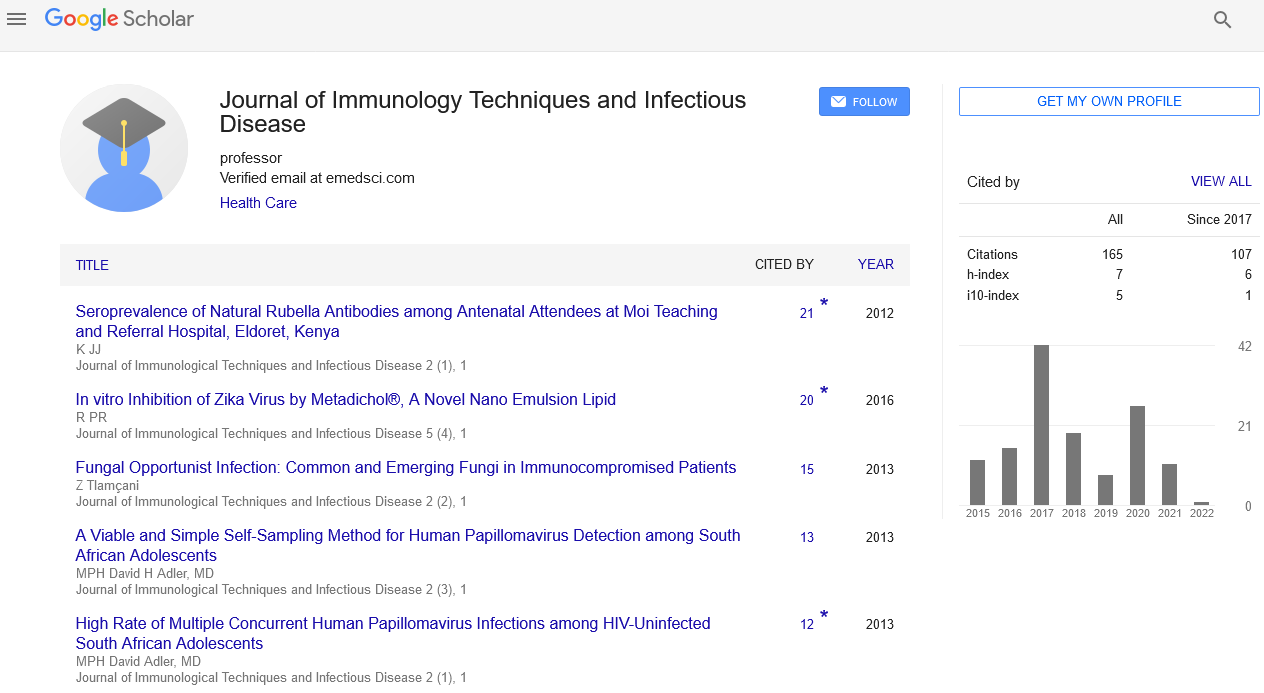Short Communication, J Immunol Tech Infect Dis Vol: 2 Issue: 1
High Rate of Multiple Concurrent Human Papillomavirus Infections among HIV-Uninfected South African Adolescents
| David Adler1*, Fatima Laher2, Melissa Wallace5, Katherine Grzesik4, Heather Jaspan3, Linda-Gail Bekker5, Glenda Gray2,Ziyaad Valley-Omar6, Bruce Allan3 and Anna-Lise Williamson3,6 | |
| 1Department of Emergency Medicine, University of Rochester, Rochester, NY, USA | |
| 2Perinatal HIV Research Unit, University of the Witwatersrand, Chris Hani Baragwanath Hospital, Diepkloof, South Africa | |
| 3Institute of Infectious Diseases and Molecular Medicine, Faculty of Health Sciences, Wolfson Pavilion Level 3, Anzio Road, Observatory 7925, Cape Town, South Africa | |
| 4Department of Biostatistics, University of Rochester, Rochester, NY, USA | |
| 5Desmond Tutu HIV Foundation, Institute of Infectious Diseases & Molecular Medicine, Faculty of Health Sciences, University of Cape Town, Wolfson Pavilion Level 3, Anzio Road, OBSERVATORY 7925, Cape Town, South Africa | |
| 6National Health Laboratory Service, Groote Schuur Hospital and Division of Medical Virology, University of Cape Town, South Africa | |
| Corresponding author : David Adler, MD, MPH Department of Emergency Medicine, University of Rochester, 601 Elmwood Avenue Box 655, Rochester, NY 14642, USA, Tel: 585-275-1198; Fax: 585-473-3516 E-mail: david_adler@urmc.rochester.edu |
|
| Received: March 04, 2013 Accepted: March 28, 2013 Published: April 04, 2013 | |
| Citation: Adler D, Laher F, Wallace M, Grzesik K, Jaspan H, et al. (2013) High Rate of Multiple Concurrent Human Papillomavirus Infections among HIVUninfected South African Adolescents. J Immunol Tech Infect Dis 2:1. doi:10.4172/2329-9541.1000106 |
Abstract
High Rate of Multiple Concurrent Human Papillomavirus Infections among HIV-Uninfected South African Adolescents
Human papilloma viruses (HPV) cause cervical cancer, the single largest cause of years of life lost from cancer in the developing world. While most infections with HPV are transient, some infections persist, causing cervical dysplasia, and ultimately invasive cervical cancer. The impact of multiple concurrent infections with two or more different HPV genotypes on the natural history of infection and cervical disease is a matter of controversy.
 Spanish
Spanish  Chinese
Chinese  Russian
Russian  German
German  French
French  Japanese
Japanese  Portuguese
Portuguese  Hindi
Hindi 
